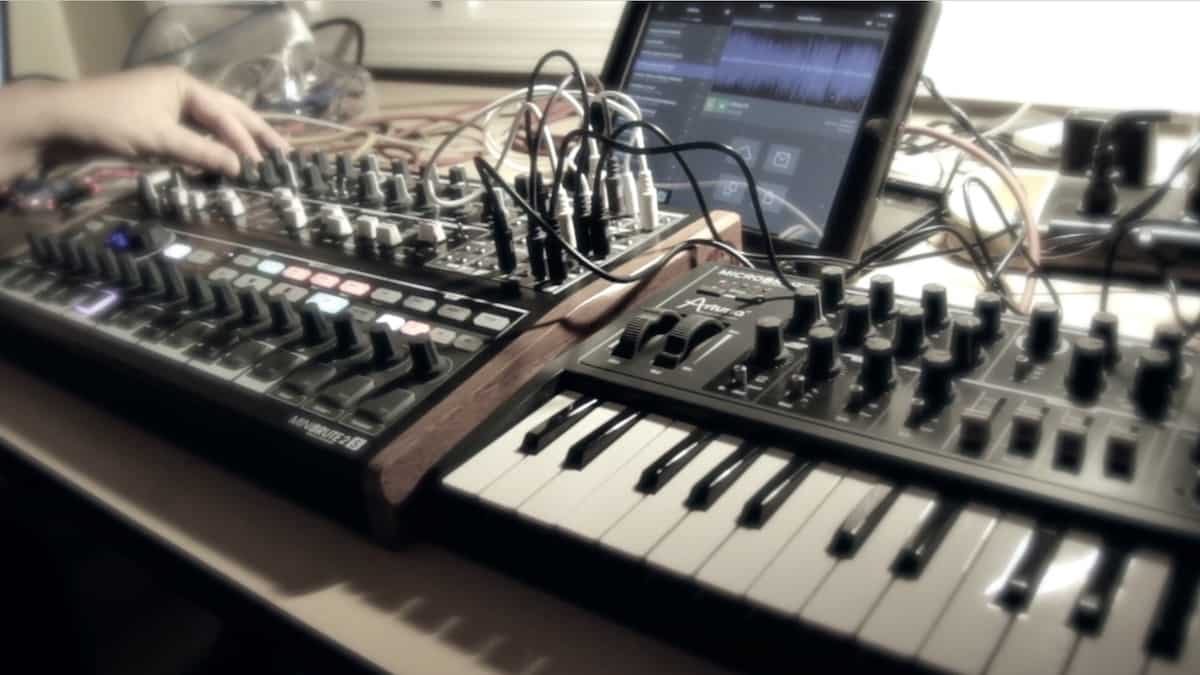Inspiration
External Audio Processing for Non-Beginners

Feed your synth audio from your phone or tablet, and synthesize your surroundings .
Many years ago (probably before I got my first synth), I read that Brian Eno processed guitars and other sounds through his synthesizer, and that fired up my imagination. When I got my first synth that could process external audio, that’s exactly what I did with it. There was no turning back.
Eno’s work with found sounds on the album My Life In the Bush Of Ghosts (Brian Eno & David Byrne, 1981) was a big inspiration. [Editor’s note: A major classic of electronic music—highly recommended!]
As I started collecting sounds, my computer and various DAWs became important tools for creating, maintaining, and playing back my “finds.” With the advent of smartphones and tablets, though, I had another very convenient option: iOS apps.
Sharing Is Caring
Kymatica’s app AudioShare has become an essential tool for me. It is the de facto audio-import interface for many of the music apps I use. When I want to listen to a new mix of my music in my car, I use AudioShare to stream the audio file (via Bluetooth) to my car stereo. And thanks to AirDrop, transferring files from my iMac to my iPhone or iPad is a breeze.
One day I realized a similar workflow could be an ideal way to bring audio into synthesizers for processing. I now have an audio file library always in my pocket on my phone. Instead of using Bluetooth, I run an audio cable from my iPhone or iPad to the synth’s audio input and let the creativity flow. Since most synthesizer audio inputs are mono, I route just one side of the device’s stereo output to the synth.
AudioShare lets you loop a file so you can have a continuous stream of audio at your disposal. Adjust the appropriate settings on your synth, and away you go. Audio input functionality varies from synth to synth. Check your manual for details. Some synths, like the Arturia MatrixBrute and DSI/Sequential Pro 2, have separate gain and level controls for their audio inputs. Others, like the Moog Little Phatty, are very barebones, with no controls at all.
Trust the Process
The videos here will give you an idea of just some of the many places you can explore. If you’re new to this kind of experimentation, one thing to remember is that in synths that process external audio, the VCA has to be gated on (in other words, left open) for you to hear the audio. On most synths, you have to hold down a key or latch a note on. Then turn down the internal oscillators to hear just your processed audio, or blend in the oscillators for even more fun.
Try sample-and-hold or step-sequenced modulation of filter cutoff to add a rhythmic feel to non-rhythmic material. Auto-Tune samples of dialog to match the key and scale of your music. Preprocess your audio file with other effects. Remember, the sky’s the limit. Process your world!
-
Features4 weeks ago
UPDATE: Mac Users: Sonoma 14.4.1 Reportedly Fixes Problems for Musicians
-
In This Issue4 weeks ago
Native Instruments Kontakt 7 Is Now Compatible With macOS Sonoma
-
Artist News4 weeks ago
Porno for Pyros Farewell Tour With Keyboardist Robin Hatch
-
Covers3 weeks ago
Image-Line FL Studio 21.2.3: the Synth and Software review















